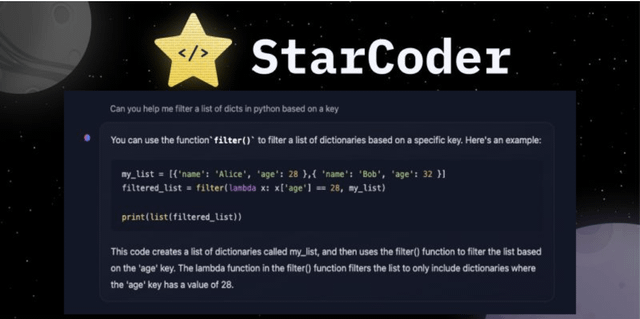There’s a reason AI is no longer just another buzzword in tech circles. It’s writing scripts, debugging lines, and offering suggestions that once took entire teams. And in this new wave of code-savvy intelligence, StarCoder is quietly standing out. Designed to generate, complete, and analyze code with a surprising level of accuracy, StarCoder isn’t trying to replace programmers — it’s just making them faster and better at what they already do.
So, what’s behind the name? Let’s take a closer look.
Understanding What Makes Different

StarCoder isn’t just another model tossed into the mix of language tools with “code” in the description. It’s trained from the ground up to think in code, not just mimic syntax. Developed by the BigCode Project, a collaborative effort between Hugging Face and ServiceNow, StarCoder was built using over 80 programming languages. It didn't just scan code snippets on the web; it digested them, learned from them, and refined patterns over time.
The idea was simple: build an open, transparent language model that could actually keep up with the real-life demands of software development. Not just autocomplete a function here and there, but genuinely understand context, adjust suggestions based on style, and even follow the thread of a project across multiple files. And it doesn’t stop there.
StarCoder is also trained with permissively licensed data only, meaning it avoids the typical grey areas we often see with other large-scale models trained on scraped codebases. It’s clean, it’s traceable, and it respects the boundaries developers care about.
How StarCoder Works Under the Hood
If you’re wondering what powers StarCoder, you’re not alone. Most models these days carry technical specs that read like a mix between a science project and a marketing campaign. But StarCoder’s architecture is a bit more grounded — and that’s what makes it genuinely useful.
At its core, it’s built on a modified version of the GPT framework, specifically optimized for code-related tasks. Think of it as a specialist: where general models try to write poems and tweets, StarCoder’s attention is laser-focused on functions, methods, and logic trees.
Here are a few features that shape how it performs:
Token window of 8,000+ tokens: This means StarCoder can keep track of large blocks of code without losing context, making it useful for multi-file analysis and end-to-end function generation.
Fill-in-the-middle capability: It can insert code between existing lines, which is a big shift from traditional left-to-right autocompletion models.
Language coverage: Python, JavaScript, C++, Rust, TypeScript, Bash — StarCoder knows them all and handles them with surprising fluency.
Natural language understanding: You can talk to it like you would a junior developer — “Write a function that takes a list of numbers and returns only the primes,” and it’ll deliver results that aren’t just functional but readable.
The model’s size options also offer flexibility. Developers can run smaller variants locally or tap into larger versions hosted by Hugging Face, depending on their needs and resources.
What You Can Use StarCoder For
While it’s tempting to think of StarCoder as a fancy autocomplete tool, that would be selling it short. It’s more of an assistant with a solid grasp of programming fundamentals. Depending on how you structure your input, it can serve in different capacities.
1. Code Completion
The most obvious one. You begin writing, and StarCoder finishes it. But unlike simple pattern-matching tools, it considers variable scope, function dependencies, and even naming conventions. If you follow snake_case, it keeps the pattern. If your functions lean toward object-oriented structures, it adjusts.
2. Code Generation from Natural Language
Say you need a parser that reads JSON and returns a flattened dictionary. Just ask for it. The model doesn’t need much hand-holding — no need to break down every single requirement. The results won’t always be production-ready, but they’ll be good enough to save you hours of groundwork.
3. Refactoring and Optimization

Feed it clunky code, and it will often return something shorter, cleaner, and easier to follow. It also spots repeated logic and suggests smarter ways to implement it. You’re not just getting a different version — you’re getting one that feels more natural to read and easier to maintain.
4. Code Explanation
This one’s particularly useful for onboarding or education. Drop a block of unfamiliar code in, and StarCoder can walk you through what it’s doing. From variable declarations to class behavior, it can break things down in plain English — or technical jargon, if that’s what you prefer.
Using StarCoder: A Simple Step-by-Step
You don’t need to be an AI researcher to use StarCoder. Here’s how to get started:
Step 1: Choose Your Setup
You have two paths: use the hosted version via Hugging Face or run it locally. For local use, you’ll need decent hardware and some patience during setup. The smaller versions are more forgiving if you’re not running a high-end GPU.
Step 2: Install the Required Libraries
Once you’re set on how you want to run it, install the Transformers and Accelerate libraries from Hugging Face. These handle model loading, input formatting, and output generation.
bash
CopyEdit
pip install transformers accelerate
Step 3: Load the Model
Loading is straightforward. Here’s an example for the hosted version:
python
CopyEdit
from transformers import AutoModelForCausalLM, AutoTokenizer
model_name = "bigcode/starcoder"
tokenizer = AutoTokenizer.from_pretrained(model_name)
model = AutoModelForCausalLM.from_pretrained(model_name)
Step 4: Provide an Input Prompt
Keep your prompt clear. If you want to write a function, describe the inputs and expected outputs. If you're asking for an explanation, paste the code followed by your question.
Step 5: Generate and Review
Let it do its job. Once you get the response, review it closely. StarCoder is smart, but it doesn't replace testing or code review. Use its suggestions as a springboard, not a final product.
Closing Thoughts
StarCoder isn’t built to wow you with flashy outputs or overhyped claims. It’s a practical, code-first model that gets things right where it matters — logic, clarity, structure. It doesn’t try to write Shakespeare. It writes code. Cleanly, clearly, and often better than you’d expect from a machine.
For developers who want a reliable assistant that actually understands the rhythm and intent of programming, StarCoder is a tool worth keeping in your stack. Not to replace you, not to outsmart you — just to help you get things done faster, with fewer mistakes and a bit more confidence.












